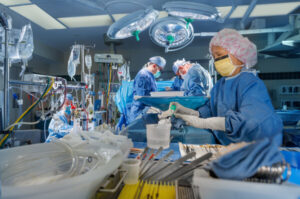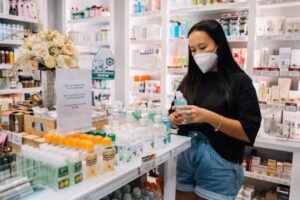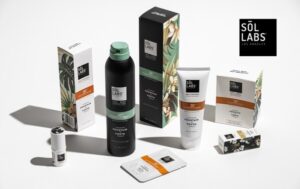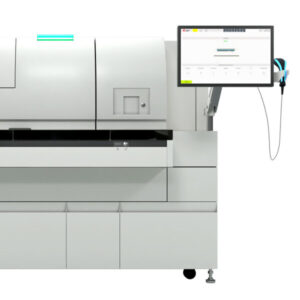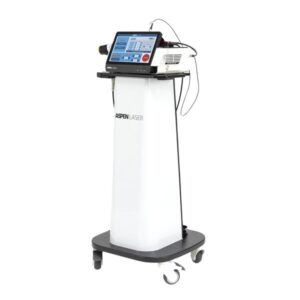REGENATIVE LABS, TOGETHER WITH THE PAIN AND SLEEP THERAPY CENTER, PUBLISHES CASE STUDY DEMONSTRATING NEW CARE ADVANCEMENTS USING WHARTON’S JELLY ALLOGRAFTS IN TEMPOROMANDIBULAR JOINT DEFECTS

Regenative Labs (Regenative), a leading HCT/P manufacturer, announces the publication of a case study demonstrating new care advancements using its Wharton’s Jelly allografts in the supplementation of Temporomandibular Joint (TMJ) defects. The case study titled “Single-Center Retrospective Study of Flowable Umbilical Cord Tissue Allograft Application in Temporomandibular Joint Defects: An Investigative Study,” was published by Walsh Medical Media and can be accessed in its entirety here.
Board-certified sleep medicine and craniofacial pain specialists Dr. Ryan Robinson and NP Rachel Reynolds of The Pain and Sleep Therapy Center presented a novel case series studying the application of Wharton’s Jelly, an umbilical cord connective tissue, to the structural tissue defect of the temporomandibular joint. This homologous use application validated by Robinson and Reynolds sets a precedent for non-surgical allograft application.
“We’ve seen a decrease in terms of healing time for patients when we’ve compared it to other types of injections that we’ve used previously for patients with temporomandibular joint dysfunction (TMD). We’ve also seen improvement in outcomes for patients who’ve been utilizing Wharton’s Jelly in conjunction with other types of modalities that we’ve used for these patients,” shared NP Rachel Reynolds.
Nearly 10 million patients suffer from TMD in the United States each year. These patients often experience symptoms ranging from joint arthralgia, displacement, degenerative arthritis, limited and painful mouth opening, painful subluxation of the joint, joint clicking, and referred pain to the periauricular area or head and neck muscles. Although there are many treatments for TMD, therapy specific to degenerative pathology of the TMJ disc itself is limited in scope and therapeutic effect.
Standard treatment includes simply resting the jaw muscles and avoiding use, massage, physical therapy, medication management, and, when all else fails, surgery. The rising annual number of surgeries and high out-of-pocket costs for patients, overall treatment costs ranging from 5,000-50,000 USD, are enough to implement conservative protocols alternative to invasive surgical repair of the TMJ.
“Today, we see many physicians who are wary about treating TMJ and often revert to standard surgical treatments. Showing the outcomes that we have for patients will hopefully help to bolster more physicians to join us in using more conservative treatments. Our patients deserve more options,” concluded Reynolds.
The five patients in this case series presented with chronic refractory TMD, specifically from severe degeneration of the structural tissues within the joint, and had failed standard-of-care practices for at least three months. After one application of Regenative’s Wharton’s Jelly allograft, the patient’s pain improved by an average of 75% after 90 days.
“A few years ago, we started using PRF (platelet-rich fibrin) therapy in the jaw joint, and we thought that was revolutionary. We have seen amazing results; however, the protocol involves additional technology like a centrifuge and consists of multiple rounds of injections to get the desired outcome. It also subjectively eliminates some patients from treatment who are opposed to blood draws on themselves. With Wharton’s Jelly, there is only one injection, which makes the application much easier, more convenient, and less invasive to the patient. What’s most exciting is the results we are seeing! We’re seeing much better patient outcomes than any other modality we’ve ever treated. We’re really excited to continue the use of Wharton’s Jelly in our Pain and Sleep clinic, and it soon becoming a routine standard for our patients who can benefit,” shared Dr. Ryan Robinson.
To advance the necessary research and fill the need for non-surgical alternatives, Regenative has been tracking data in its comprehensive retrospective data repository in which physicians across specialties submit patient data as they track patient outcomes up to 120 days after the patient receives an application of Regenative’s products, like its Wharton’s Jelly allografts.
Regenative has collected data from clinics nationwide on Wharton’s Jelly homologous-use applications around the body. Still, very few have documented data on the jaw joint, and Regenative is excited to highlight this unique procedure in the first of many publications on regenerative orthodontic medicine.
“Given the high incidence rate and few effective treatment options for defects in the Temporomandibular Joint, this study aims to provide a new, promising alternative intervention for patients who have failed all other standard-of-care treatments. This is just one of many homologous-use applications in regenerative medicine to improve patient outcomes,” shared Regenative Labs CEO Tyler Barrett.
Barrett and his team hope to enlist physicians to take part in studies regarding uncovered uses. Physicians will have their outcomes highlighted, furthering the understanding of regenerative medicine and uncovering new applications for this groundbreaking field of medicine.
“We’re doing the research at Regenative, and the results are very promising. We are calling on all physicians across the country to engage with us to advance the field of regenerative medicine,” Barrett concluded.

